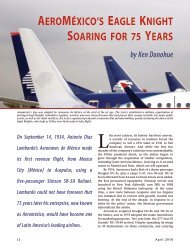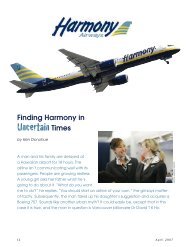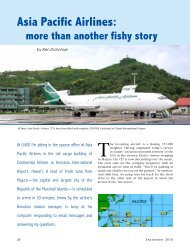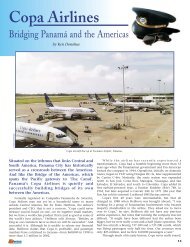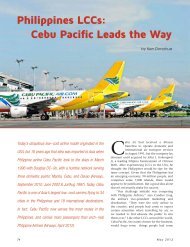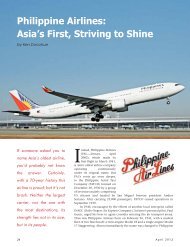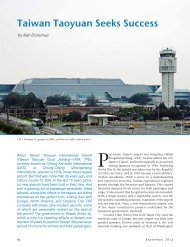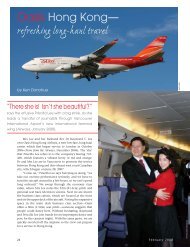A little ferry fleet and how it grew - Ken Donohue
A little ferry fleet and how it grew - Ken Donohue
A little ferry fleet and how it grew - Ken Donohue
You also want an ePaper? Increase the reach of your titles
YUMPU automatically turns print PDFs into web optimized ePapers that Google loves.
The government got into the <strong>ferry</strong> business qu<strong>it</strong>e by accident. In the spring<br />
of 1958, the coastal <strong>ferry</strong> services were put in jeopardy when labour<br />
disputes threatened to isolate Vancouver Isl<strong>and</strong>.<br />
At the time, Black Ball ran passenger <strong>and</strong> vehicle service between<br />
Vancouver <strong>and</strong> Nanaimo, while the CPR offered sailings between<br />
Vancouver <strong>and</strong> Victoria. There had been labour dissatisfaction among<br />
employees of both CPR <strong>and</strong> Black Ball, but <strong>it</strong> culminated when Black Ball<br />
employees gave strike notice on June 23, 1958.<br />
Then Premier W.A.C. Bennett, as he was known to do, acted swiftly by<br />
invoking the Civil Defence Act, which ultimately gave the government<br />
control of the Black Ball’s routes.<br />
Concerned about the inadequacy <strong>and</strong> vulnerabil<strong>it</strong>y of <strong>ferry</strong> service between<br />
the Mainl<strong>and</strong> <strong>and</strong> Vancouver Isl<strong>and</strong>, the government approached Black<br />
Ball <strong>and</strong> CPR about exp<strong>and</strong>ing their service. Ne<strong>it</strong>her was interested.<br />
And so <strong>it</strong> was on July 18, 1958, that Bennett announced the government<br />
would establish <strong>it</strong>s own <strong>ferry</strong> service between Vancouver <strong>and</strong> Vancouver<br />
Isl<strong>and</strong>. Construction of two vessels, each capable of carrying 100 cars <strong>and</strong><br />
500 passengers, was begun immediately.<br />
Reaction to the news of government involvement in the <strong>ferry</strong> business was<br />
mixed. Many argued that expansion of the coastal <strong>ferry</strong> service would not<br />
be successful due to a lack of dem<strong>and</strong>. Bennett, <strong>how</strong>ever, was intent on<br />
proving his cr<strong>it</strong>ics wrong.<br />
On June 9, 1960, less than two years after the government’s intervention,<br />
the ferries <strong>and</strong> terminals were ready. Originally estimated at $8 million, the<br />
final cost was $12 million <strong>and</strong> no one seemed too concerned. It was an era<br />
of unprecedented growth <strong>and</strong> this investment reflected prosperous times.<br />
On that first day, June 15, 1960, the M.V. Sidney built in a record 12<br />
months—made <strong>it</strong>s maiden voyage from Swartz Bay to Tsawwasssen w<strong>it</strong>h<br />
just 26 vehicles <strong>and</strong> 10 foot passengers. But w<strong>it</strong>hin <strong>it</strong>s first year, B.C.<br />
Ferries carried 350,000 <strong>and</strong> 120,000 vehicles. And unheard of today, the<br />
company even turned a prof<strong>it</strong> in <strong>it</strong>s first few years of operation.<br />
While <strong>it</strong>s beginnings may have been modest, <strong>it</strong>s amb<strong>it</strong>ions were lofty.<br />
W<strong>it</strong>hin six years, 14 ships had been built <strong>and</strong> more routes were being<br />
added. Success for B.C. Ferries has come by meeting the dem<strong>and</strong>s of<br />
increased passenger <strong>and</strong> vehicle traffic.<br />
In the early 1970s seven vessels were “stretched” as an 84-foot midsection<br />
was added. In 1985, four of those ships were “lifted” to allow an<br />
extra vehicle deck. This concluded one of the boldest projects in the<br />
history of marine engineering.




